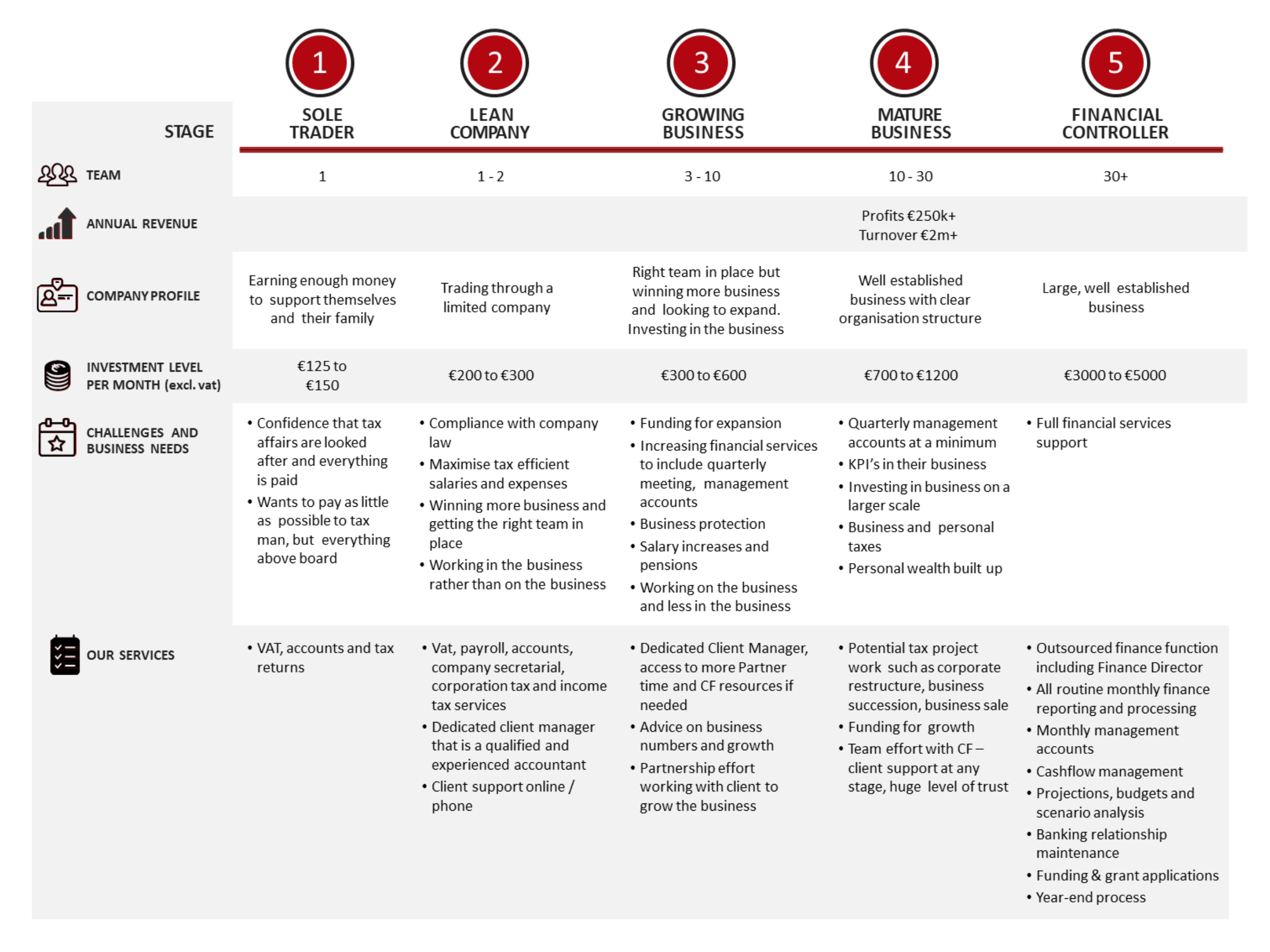Figure 1
| Simple Profit & Loss Account | ||||||
| QTR 2, FY15 | ||||||
| € | ||||||
| Revenue | 95,000 | |||||
| Cost of Sales | 45,000 | |||||
| Gross Profit | 50,000 | |||||
| Overheads | 30,000 | |||||
| Net Profit | 20,000 | |||||
The above is an example of a small manufacturing entity which manufactures five different products. On revenue of €95,000 in QTR 2 they made a profit of €20,000. All looks well in the world! There are a number of significant deficiencies in the above however.
- We do not know how the gross profit was arrived at between each of the five products. Certain product lines may in fact not be contributing to overall gross margin
- Key customers and their margins have not been considered. Within a particular product line there could be customers that are driving more margin than others or customers that are actually not adding to margin at all
- There is no consideration given to the direct selling costs associated with generating the revenue. In certain sectors it would not be unusual to have promotional or recharge costs in driving revenue. In the above all of those costs are buried in overheads meaning the readers of the report cannot consider if these investment costs have resulted in an appropriate return for the business
- There is no plan or forecast shown with variances. This is the most significant deficiency. Without a plan there is no accountability. While the fact that the company is making a profit might result in everyone clapping themselves on the back, that profit might be well behind what an outlook or plan would have been
In reviewing the monthly or quarterly Profit & loss account of your business it is important to really challenge and analyse the numbers. While the overall picture is important a more in depth and analytic review is essential. Month end reports should be designed to allow this analysis. Going a step further back, it is important to consider how information is going to be captured from the outset to allow this type of data to be produced without significant additional time investment. This does not have to be an expensive or difficult process, just a clear structure and agreed process. For example, split of the nominal ledger by departments or business units, customer categories by product/sales channel etc.
Figure 2
| Sales Analysis | |||||||
| QTR 2, FY15 | |||||||
| Actual | Plan | Variance | % Achieved | ||||
| Customer A | 10,000 | 30,000 | (20,000) | 33% | |||
| Customer B | 30,000 | 40,000 | (10,000) | 75% | |||
| Customer C | 5,000 | 10,000 | (5,000) | 50% | |||
| Customer D | 20,000 | 10,000 | 10,000 | 200% | |||
| Customer E | 15,000 | 5,000 | 10,000 | 300% | |||
| Customer F | 15,000 | 5,000 | 10,000 | 300% | |||
| 95,000 | 100,000 | (5,000) | 95% | ||||
| Profit & Loss Account | |||||||
| Product 1 | Product 2 | Product 3 | Product 4 | Product 5 | Total | ||
| Revenue | 15,000 | 10,000 | 30,000 | 15,000 | 25,000 | 95,000 | |
| Promo Costs | _______ | _______ | (20,000) | _______ | ______ | (20,000) | |
| Net Revenue | 15,000 | 10,000 | 10,000 | 15,000 | 25,000 | 75,000 | |
| Cost of Sales | (2,000) | (8,000) | (10,000) | (12,000) | (13,000) | (45,000) | |
| Gross Profit | 13,000 | 2,000 | – | 3,000 | 12,000 | 30,000 | |
| Overheads | (2,000) | (2,000) | (2,000) | (2,000) | (2,000) | (10,000) | |
| Net Profit | 11,000 | ___-___ | (2,000) | 1,000 | 10,000 | 20,000 | |
As a report, figure 2, while still not perfect, gives a lot more food for thought and issues to discuss. Some obvious questions which can be addressed by the readers of figure 2, which would not have arisen if all they had seen was figure 1 would be;
- Why is customer A so far behind target?
- Why are Customers B & C also behind budget?
- What is causing Customers D, E & F to perform so strongly?
- All of the net profit is being generated from two products (Product 1 & 5)
- Product 3 is actually losing money. In order to promote sales the company made a contribution towards a promotion in a retail outlet at a cost of €20,000. The promo was a 20% retail discount which cost the company €10,000 (RRP is €5 and for the duration of the promotion it was €4. The retailer recharged this in full to the company) and a further €10,000 was used for in-store promotional costs.
- Are the margins being earned on Products 2 & 4 worth it for the company? Would there be an overhead saving of €4,000 by ceasing these lines? The company would actually have made a further €3,000 if that was the case.
Regardless of the size of your business there is no reason why you cannot analysis your business and its operations at this kind of level. It will allow strategic decisions to be made a lot easier and ultimately add considerable value to your business.

